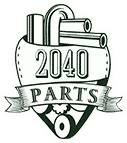1971 Or 1972 Monte Carlo Fender Extension- Drivers Side Original Gm on 2040-parts.com
Tucson, Arizona, United States
|
Fender extension for a 1971 or 1972 Chevy Monte Carlo, clean and straight Arizona part.
|
Fenders for Sale
 1971 or 1972 chevy monte carlo passenger side fender extension
1971 or 1972 chevy monte carlo passenger side fender extension 1967 camaro ss left or right fender emblem with speed nuts (1) show quality(US $9.95)
1967 camaro ss left or right fender emblem with speed nuts (1) show quality(US $9.95) 1957 1958 ford truck fiberglass fender(US $150.00)
1957 1958 ford truck fiberglass fender(US $150.00) Left fender skirt 1966 buick electra 66 wildcat lesabre(US $89.00)
Left fender skirt 1966 buick electra 66 wildcat lesabre(US $89.00) Right fender skirt 1966 buick electra 66 wildcat lesabre(US $89.00)
Right fender skirt 1966 buick electra 66 wildcat lesabre(US $89.00) Hood release assembly 1963 pontiac catalina 63 bonneville grand prix star chief(US $59.00)
Hood release assembly 1963 pontiac catalina 63 bonneville grand prix star chief(US $59.00)
2011 / 2012 Mercedes SLK Revealed
Thu, 13 Jan 20112011 Mercedes SLK finally gets an official reveal. Sort of. To be honest, we’d expected Mercedes to be forthcoming on the new Mercedes SLK a little before now.
Smart designs eBike
Tue, 23 Aug 2011Smart has joined its fellow car manufacturers in designing a bicycle and is putting it into series production. The main components of the eBike such as the frame, battery housing, handlebars, lights and mudguards have been designed and developed specifically for Smart. The two-color concept is, so it's makers claim, recognizable as classic Smart, with the plastic battery housing forming a contrast to the aluminum frame.
Essex boost for car loving home buyers
Sun, 31 May 2009An Essex council is to make garages and drives bigger on new homes For most of the last decade the UK Government has waged a war on the motorist. Endless speed cameras, which are in reality just tax-raising machines and have little to do with road safety; never-ending fuel tax rises; congestion charging; spiralling parking charges; road-charging schemes and the only coppers you see have a speed gun so non-speeding untaxed and uninsured drivers never get caught - pushing up costs for the rest of us. But one of the most stupid, head-in-the-sand policies was the idea that new houses should encourage people to forsake their cars by making garages too small and off-street parking almost non-existent.



